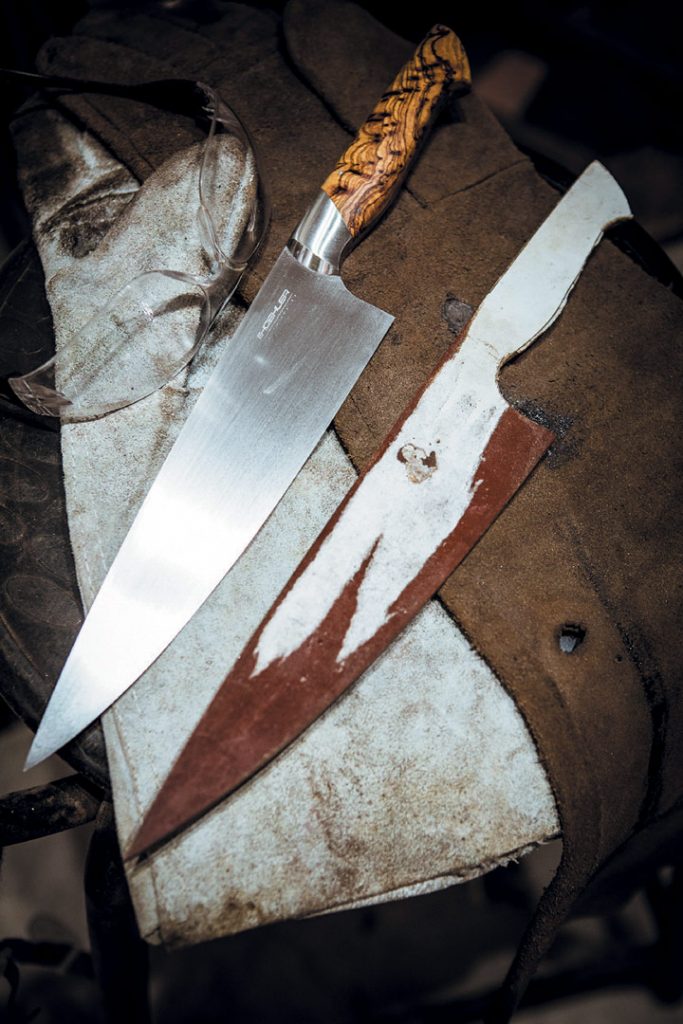With the selection of chef’s knives available today, it can be daunting to know which one to choose. Blade profile and handle shape are a personal choice, but David Hoehler, crafter of superious chef’s knives, recommends starting with a 21cm chef’s knife.
The measurement refers to the length of the blade from the tip down to the heel (the part of the blade that connects to the handle).
So why chose a 21cm chef’s knife?
According to David, the key factor is knuckle clearance: when you hold the knife in a pinch grip, you should be able to make a full downwards stroke without your knuckles coming into contact with the chopping board. This easily allows for the rolling cutting technique, slicing and julienning.
Once you become more comfortable with your knife, you can then pinch-grip the tip to do more delicate work.
“The 21cm chef’s knife is a kitchen workhorse; it’s able to complete 80% of all jobs. But, for some, this knife can be intimidating. That’s when either a 16 or 17cm one can be useful, as the more comfortable you feel about your knife, the easier it becomes to use,” David explains.
Nonetheless, David says the drawback to shorter blades is that knuckle clearance isn’t great, so you will have to adapt your cutting style by cutting just with the tip, or elevating your wrist more and using only the front half of the blade.
However, for finer work, he recommends the 17cm as more suitable.
“Perhaps the most important piece of advice I can give is: learn how to sharpen your knife. You can buy a R100 000 custom chef’s knife (yes, top knifemakers do charge that!), but even this will go blunt.
Use a Japanese water stone to keep your knives sharp at all times,” David concludes.

